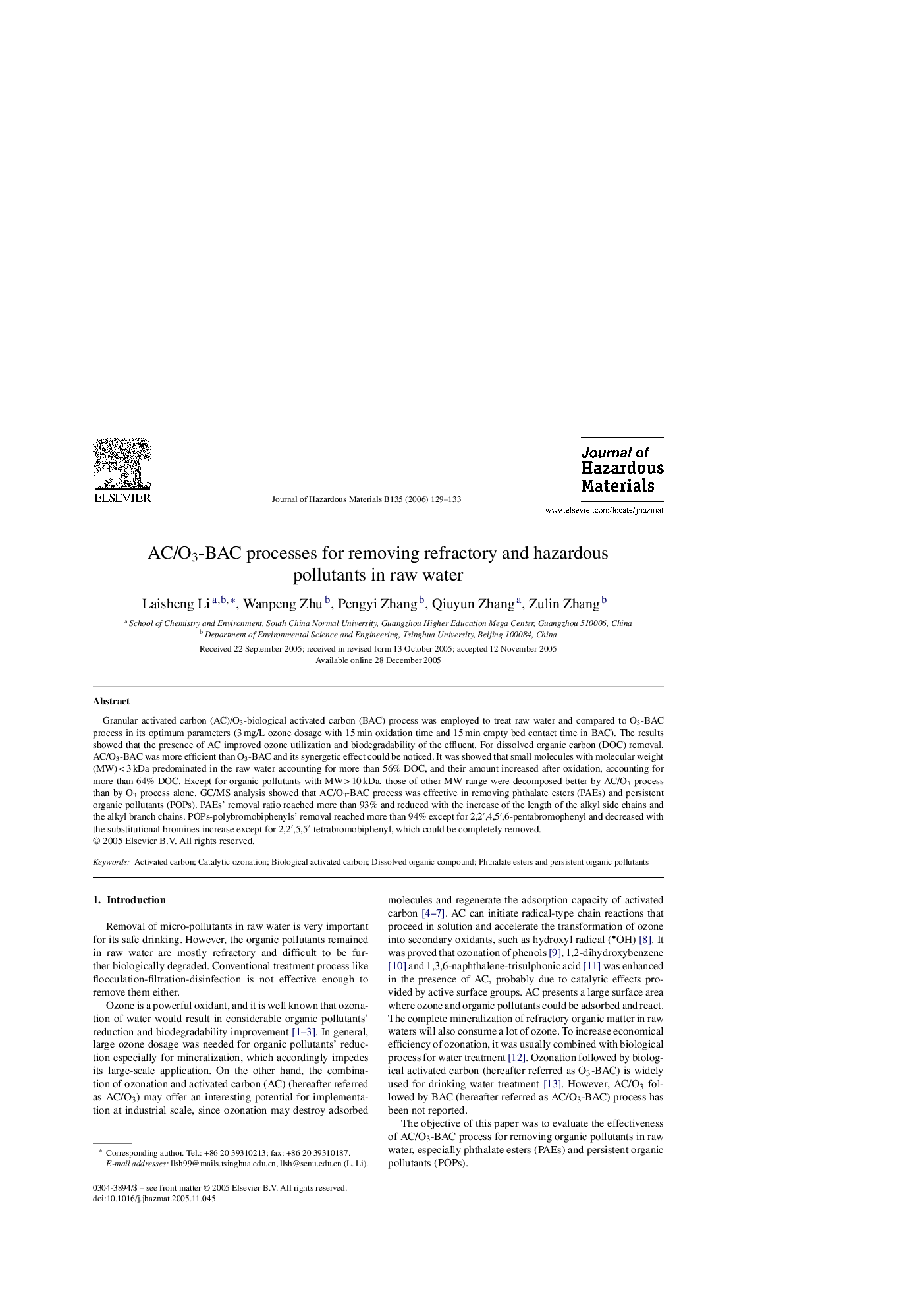| کد مقاله | کد نشریه | سال انتشار | مقاله انگلیسی | نسخه تمام متن |
|---|---|---|---|---|
| 585737 | 1453187 | 2006 | 5 صفحه PDF | دانلود رایگان |

Granular activated carbon (AC)/O3-biological activated carbon (BAC) process was employed to treat raw water and compared to O3-BAC process in its optimum parameters (3 mg/L ozone dosage with 15 min oxidation time and 15 min empty bed contact time in BAC). The results showed that the presence of AC improved ozone utilization and biodegradability of the effluent. For dissolved organic carbon (DOC) removal, AC/O3-BAC was more efficient than O3-BAC and its synergetic effect could be noticed. It was showed that small molecules with molecular weight (MW) < 3 kDa predominated in the raw water accounting for more than 56% DOC, and their amount increased after oxidation, accounting for more than 64% DOC. Except for organic pollutants with MW > 10 kDa, those of other MW range were decomposed better by AC/O3 process than by O3 process alone. GC/MS analysis showed that AC/O3-BAC process was effective in removing phthalate esters (PAEs) and persistent organic pollutants (POPs). PAEs’ removal ratio reached more than 93% and reduced with the increase of the length of the alkyl side chains and the alkyl branch chains. POPs-polybromobiphenyls’ removal reached more than 94% except for 2,2′,4,5′,6-pentabromophenyl and decreased with the substitutional bromines increase except for 2,2′,5,5′-tetrabromobiphenyl, which could be completely removed.
Journal: Journal of Hazardous Materials - Volume 135, Issues 1–3, 31 July 2006, Pages 129–133